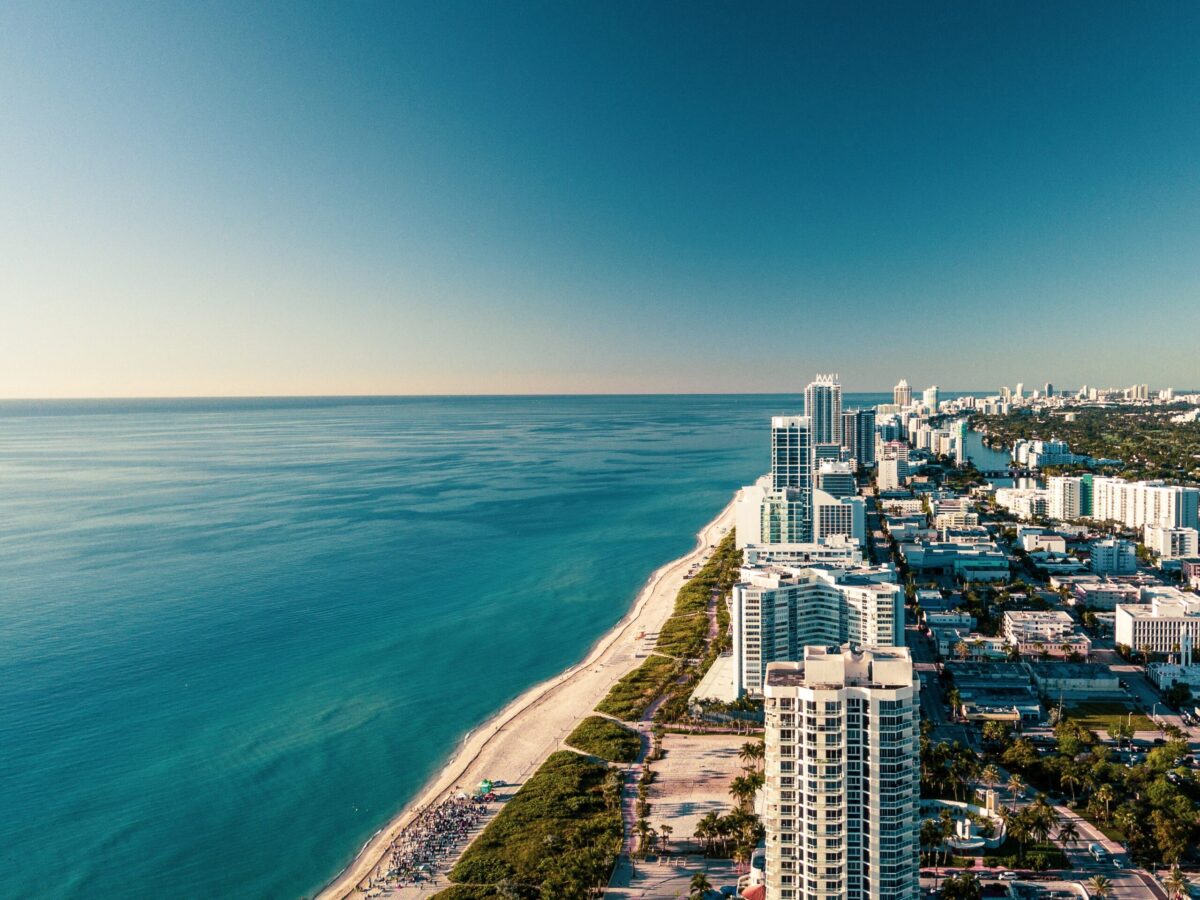MIAMI, FL — As Florida’s most populated metropolitan area faces record heat, storms and rising seas, its most vulnerable bear the brunt.
A new report from Climate Refugees highlighting two low-income communities of color in Miami, Little Haiti and Liberty City, shows how vulnerability to climate change worsens gentrification and displacement in these neighborhoods, and suggests that local responses to climate impacts can worsen this displacement.
Climate change and vulnerable communities
Although extreme weather is nothing new to South Florida, its frequency and severity is worsening, note Ryan Plano and Amali Tower, authors of the December 2023 report.
Recent studies show that Miami’s sea-levels are rising even faster above levels in the year 2000 than the expected 10 to 17 inches by 2040.
Last year, the city’s heat index topped 100° F for a record 37 consecutive days, and 106° for a record 13 days; previously, these respective thresholds were 32 and four days. The heat index of the human body, for comparison, is 105°.
Although no part of Miami-Dade County is exempt from these impacts, the most vulnerable neighborhoods are low-income communities of color with older, less energy-efficient housing — like Little Haiti, the cultural heart of Miami’s Haitian diaspora, and Liberty City, where Miami’s African American workforce was historically redlined.
The report notes that much of this vulnerability owes to the urban heat island effect of higher temperatures due to infrastructure “that absorbs and re-emits heat as compared to green space and bodies of water.”
“The lack of investment in environmental conditions that would reduce local temperatures — and make neighborhoods more pleasant for residents and visitors alike — was clear,” the authors write. “There was a distinct lack of shade trees, and in some cases any street trees at all, along main thoroughfares in Little Haiti and Liberty City … This is in stark contrast to the streetscape in ‘revitalized’ parts of the city, such as the Design District, just minutes away from Little Haiti and home to luxury stores and thoughtfully landscaped, ‘walkable’ streets.”
Housing and gentrification
As these climate impacts worsen in Miami, the city is also investing in a construction boom to meet a housing crisis caused by its steady population increase, which has only in 2023 declined.
Even before the pandemic, the report notes, half of households in Miami-Dade were “cost-burdened,” i.e. spending over 30% of their income on rent or mortgage. The aging units of these households are often ill-equipped to handle extreme heat or are energy-inefficient, worsening energy cost burdens through “deferred maintenance and rising upkeep costs.”
In response, Miami-Dade has been on national front lines of extreme heat response through initiatives like its Extreme Heat Toolkit for low-income housing assistance, and creating one of the country’s first Chief Heat Officer offices, which recently installed 1700 AC units in public housing countywide.
However, the authors emphasize that heat is only “one climate-exacerbated housing issue” facing Miami’s vulnerable residents, whereas the biggest may be gentrification.
Climate impacts and displacement
Displacement due to gentrification in Miami is worsened not only by non-heat climate impacts such as rising seas and frequent flooding, but also by “the interlinked failure of authorities” given that there is less economic incentive to adequately protect under-developed neighborhoods with low home ownership and rising insurance rates than to make these areas more attractive to rich developers.
For example, every 1° C (33.8° F) rise in global heat increases the risk of flooding displacement by 50%; accordingly, increased flood insurance coverage now required by FEMA in Miami has led some researchers to note that climate-caused gentrification in the city is “more reflective of a rational economic investment motivation in response to expensive flood insurance rather than sea-level rise itself.”
From 2020 to 2023, in fact Florida lost over 30 insurance providers, due to insolvency largely associated — as the providers themselves have maintained — with climate disaster premiums too costly for affordable housing developments.
This process of climate gentrification is particularly hitting inland Little Haiti and Liberty City — one of Miami’s highest points, 10 feet above sea level — because developers bill high-cost redevelopment plans as “revitalization” for the neighborhoods, which are slightly more elevated than oceanfront areas.
One recent peer-reviewed study of Miami-Dade County found that 56% of residents exposed to one meter (40 inch) of rising sea levels would be displaced.
In 2015, for instance, Miami-Dade began investing $74 million in public funds for the “revitalization project” Liberty City Rising, despite resident resistance.
In 2019, the city of Miami approved — to even stauncher opposition — the Magic City Innovation District, a $1 billion redevelopment plan of Little Haiti, where only 26% of residents own their homes, and where the average home costing $58,403 in 2012 averaged $482,557 in April 2023.
Although the Climate Refugees report focuses upon these two neighborhoods specifically, they’re a “canary in the coal mine” for climate gentrification more broadly.
The authors not only attribute climate displacement in Miami to low home ownership and skyrocketing insurance premiums, but also stress that many of the unique strides that local government has taken to address climate impacts are worsening this displacement.
In short, Miami may serve as a lesson nationwide that “broad-stroke” climate investments by local governments in historically marginalized areas could worsen displacement “if they fail to keep cost-of-living in check” for those most needing these investments.




